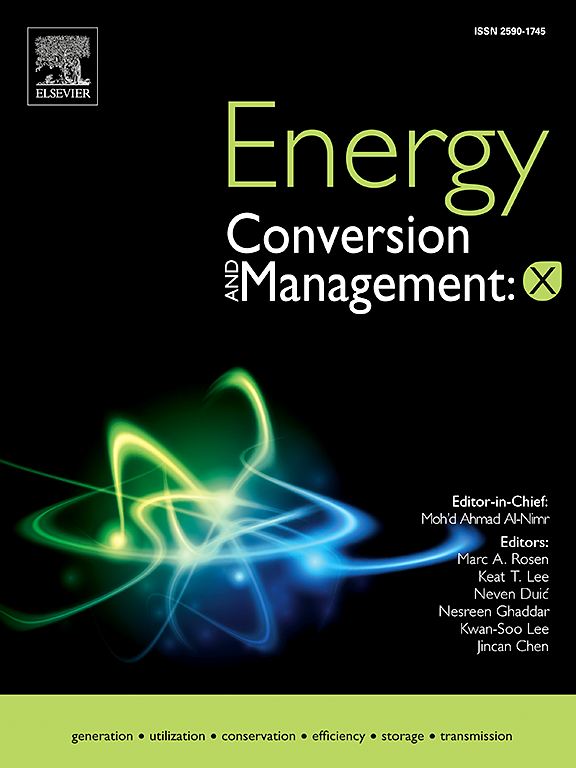A new methodology to easy integrate complementarity criteria in the resource assessment process for hybrid power plants: Offshore wind and floating PV
IF 7.1
Q1 ENERGY & FUELS
引用次数: 0
Abstract
The maturity of technologies of energy generation from renewable sources produces tense an increasing interest on hybrid power plant implementation. The combination of different resources, as wind and solar, introduces concepts as complementarity that must be taken into account when suitability of emplacements is made. This work presents a methodology to evaluate a geographic area under the perspective of installing hybrid wind and PV power plants. Therefore, it proposes a way to evaluate the complementarity among both resources that would avoid overestimation due to time delays and it also would offer a holistic procedure to identify the most suitable locations to host one of these hybrid power plants. The methodology is illustrated by evaluating the Off-shore Spanish area to install wind and floating PV plants and is flexible to adapt the evaluation according to dimension of each technology in the future plants. It is shown how the complementarity criteria as input in the site selection process improves the ordered of emplacements obtained when only resource amount is taken into account. The methodology can be used to identify more suitable areas in the initial stages of promoting hybrid power plants. Data from ERA5 and CAMS are used to analyze long term behavior of wind and solar resources.
求助全文
约1分钟内获得全文
求助全文
来源期刊

Energy Conversion and Management-X
Multiple-
CiteScore
8.80
自引率
3.20%
发文量
180
审稿时长
58 days
期刊介绍:
Energy Conversion and Management: X is the open access extension of the reputable journal Energy Conversion and Management, serving as a platform for interdisciplinary research on a wide array of critical energy subjects. The journal is dedicated to publishing original contributions and in-depth technical review articles that present groundbreaking research on topics spanning energy generation, utilization, conversion, storage, transmission, conservation, management, and sustainability.
The scope of Energy Conversion and Management: X encompasses various forms of energy, including mechanical, thermal, nuclear, chemical, electromagnetic, magnetic, and electric energy. It addresses all known energy resources, highlighting both conventional sources like fossil fuels and nuclear power, as well as renewable resources such as solar, biomass, hydro, wind, geothermal, and ocean energy.
 求助内容:
求助内容: 应助结果提醒方式:
应助结果提醒方式:


